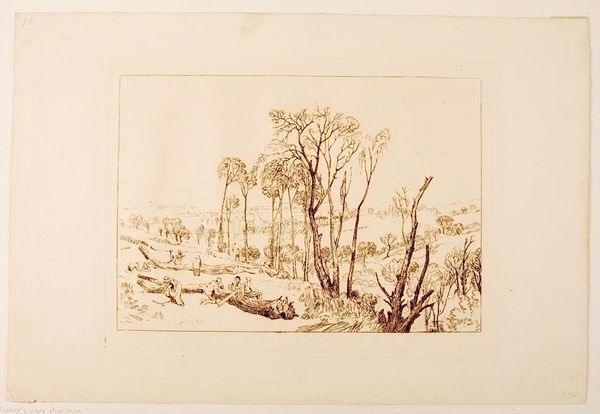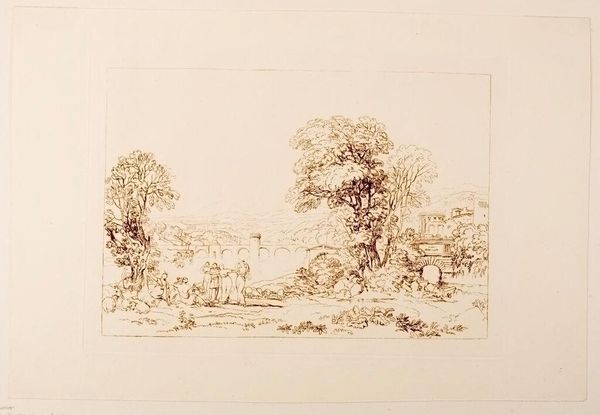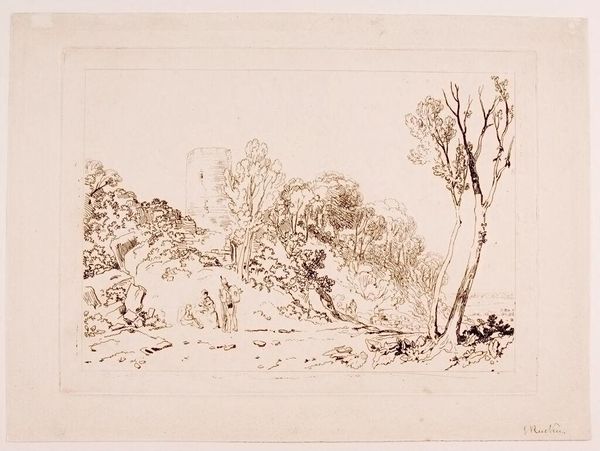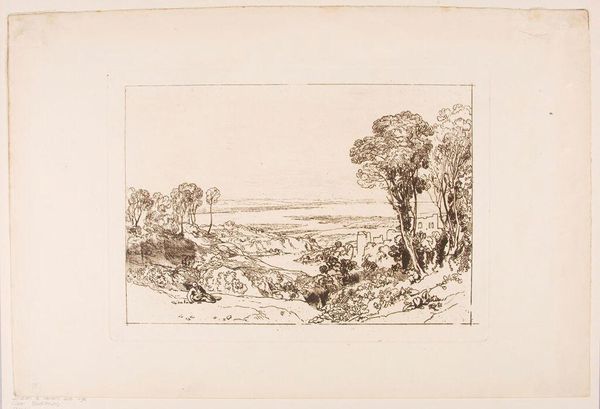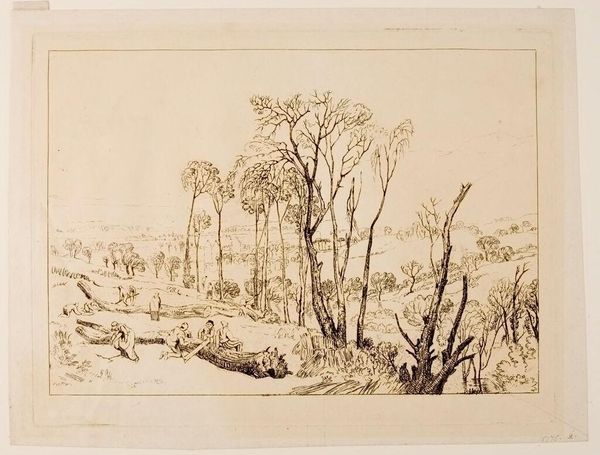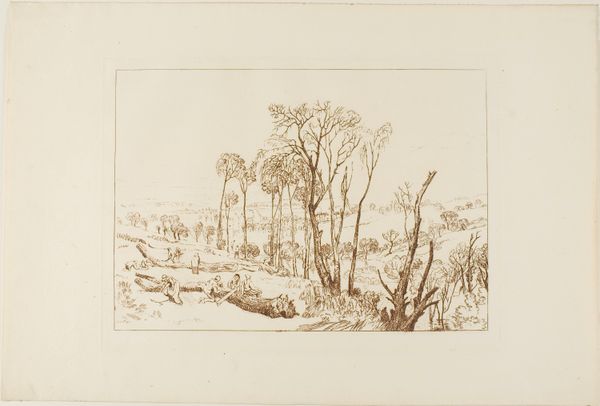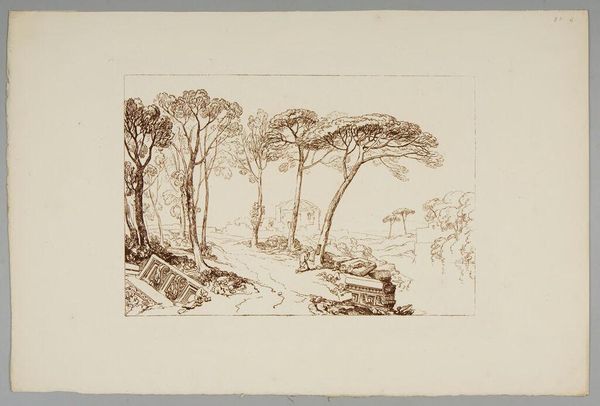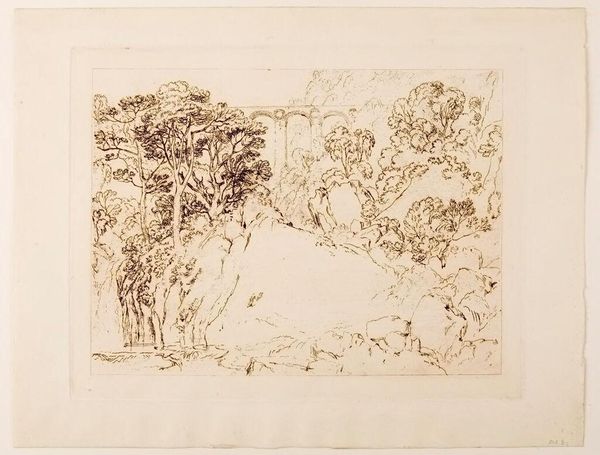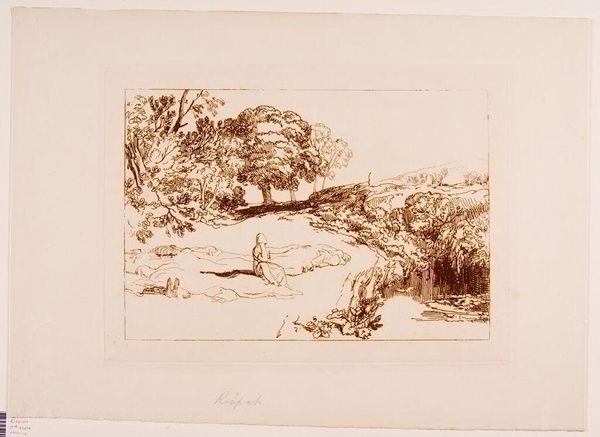
Copyright: CC0 1.0
Curator: What strikes me immediately is this sepia wash drawing. It's a work by J.M.W. Turner titled "Dumbarton Rock," part of the collection here at the Harvard Art Museums. It looks like he's captured a distant landscape. Editor: Yeah, there's a hauntingly beautiful, almost dreamlike quality to it. The monochrome palette lends an air of antiquity, doesn't it? You can almost feel the wind whispering through the trees in the foreground. Curator: Turner was very interested in topographical studies, and how industry was changing the landscape. Works like this are also connected to the tradition of picturesque landscape, and how the rise of tourism re-framed the perception of Scotland's landmarks. Editor: Absolutely. There's a sense of romantic isolation. It makes me wonder, what did Turner feel when he stood before that scene? Was it awe? Melancholy? Or the pure joy of rendering light and form? Curator: Well, it's works like this that allow us to see Turner's engagement with Romanticism, and the changing status of nature during industrialization. Editor: It's more than just a pretty picture; it's a captured moment, a mood, an echo of a bygone era. Thanks for sharing your insight. Curator: My pleasure, and it is why we continue to look to the past.
Comments
No comments
Be the first to comment and join the conversation on the ultimate creative platform.
